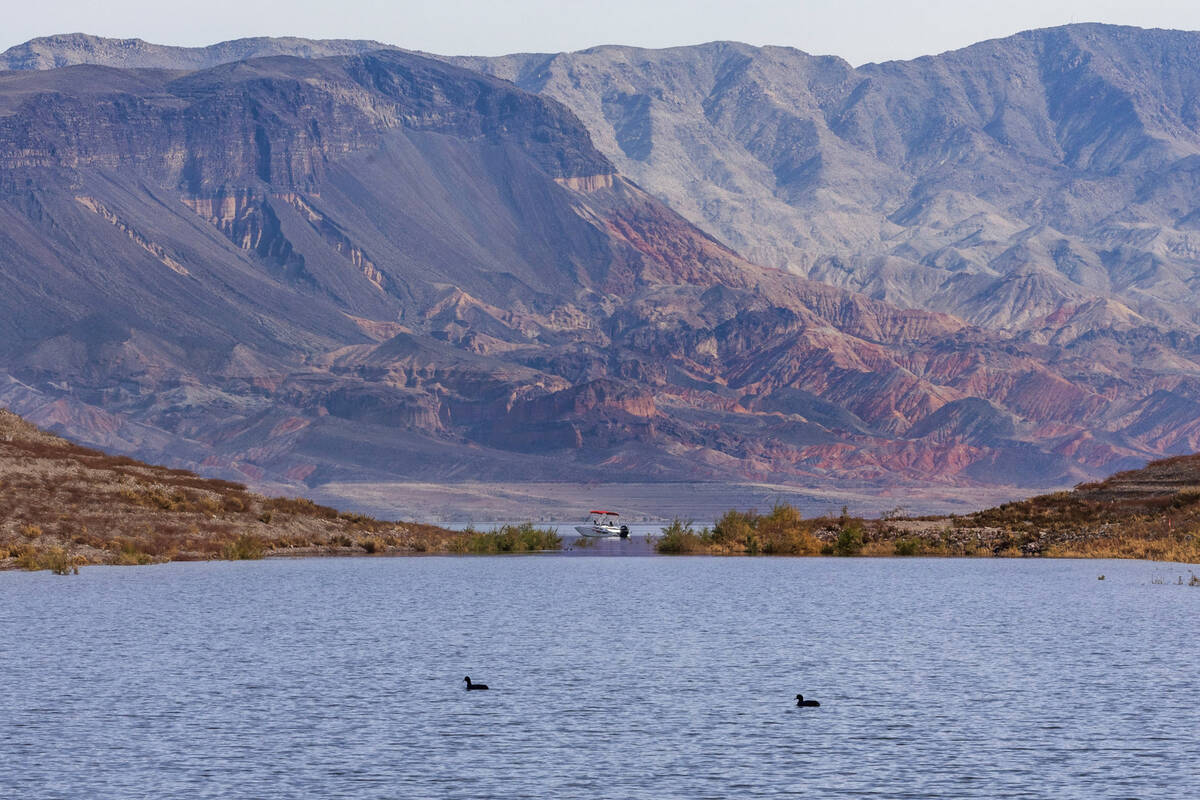‘Forever chemicals’ in Nevada’s water could threaten public health

Cancer-causing chemicals in Nevada’s water supply might be here to stay.
But multiple government bodies are attacking the problem head-on, especially with new regulations and $10 million in funding handed down from the Environmental Protection Agency.
PFAS, or perfluoroalkyl and polyfluoroalkyl substances, are chemicals used to resist heat, oil, stains and water in a wide array of products from furniture to food packaging and cooking utensils. They don’t break down easily and can build up, or bio-accumulate, in people’s bodies and in the environment over time, potentially causing health problems like cancer or thyroid issues.
The finalized EPA regulations on PFAS in drinking water are the first of their kind to be implemented across the nation. It’s the final step of a federal effort to begin addressing these so-called forever chemicals, which have alarmed chemists and environmental justice advocates for years.
“Drinking water contaminated with PFAS has plagued communities across this country for too long,” agency administrator Michael Regan said in a statement, adding that the regulations will save lives and protect the long-term health of young people.
What about Nevada?
Nevada doesn’t have any industry that manufactures products with PFAS, according to the Nevada Division of Environmental Protection. In general, East Coast states with factories that do make such products have found higher concentrations in their drinking water.
The state Legislature did ban PFAS in firefighting foam, a well-known source of pollution, in 2021. It also required the Division of Environmental Protection to develop a “PFAS Action Plan,” which was released in 2022.
A significant change since then has been more testing on a statewide level. Only six groundwater wells that the Nevada Division of Environmental Protection and the EPA have tested came in above the new regulations, Bureau of Safe Drinking Water chief Andrea Seifert said.
One of them happens to be in Las Vegas.
The Hillcrest Manor Water Users Association delivers water to about 120 homes in the city, some of the very few that rely on pumping water from the ground instead of sourcing drinking water from Lake Mead. One of its wells tested this year had levels above safe drinking water standards, causing the association to notify residents by mail and initiate the process to replace one of its affected water tanks.
Association President Tricia Pintar, who quickly had to become a PFAS expert, said she believes the chemicals likely came from the replacement of the water system — both of their wells draw from the same underground aquifer, but only one was polluted.
“It snuck up on us,” Pintar said. “We had no idea.”
No cause for alarm in Las Vegas
On the whole, Las Vegas is in good shape. Southern Nevada’s water also has consistently fallen below detectable thresholds since the region’s water authority began testing for the chemicals in 2008, said Eric Dickenson, a water authority researcher.
However, PFAS still represent an emerging threat to public health if not monitored extensively, he said.
Part of the regional effort is research. There’s a new study Dickenson and other water authority scientists have drafted to help pinpoint the most pervasive sources of forever chemical pollution in Southern Nevada.
The study, which isn’t yet peer-reviewed, sampled areas along the Las Vegas Wash, which carries treated wastewater to Lake Mead. They established that at least 48 percent of PFAS are coming from wastewater, and a chunk of them may come from an airport in the area, too.
“What’s challenging about PFAS is that it encompasses about 5,000 types of compounds,” Dickenson said. “It’s hard to define a fingerprint or a particular source.”
More data, more clarity
Yeongkwon Son, a Desert Research Institute researcher and University of Nevada, Reno professor who wasn’t involved in the study, said understanding where chemicals are coming from could be useful to clean up areas where they have built up before rain moves them into the Las Vegas Wash.
Son published a study in 2021 examining chemicals in waters across the state, and it was one of the first to focus on PFAS pollution in Nevada. In the future, the water authority could intervene and treat water for PFAS, but that hasn’t yet become necessary, according to the standards finalized on April 10.
“Now that we know what’s going on throughout Nevada, we can start to discuss plans to reduce those pollutants and protect not only humans, but the environment,” he said.
Seifert, of the state’s Bureau of Safe Drinking Water, encourages all Nevadans to research where their water comes from and see if there are any sampling results above the standard.
In addition, there are steps homeowners can take to protect their family’s water, such as installing activated carbon filters and reverse osmosis filters.
“Talk to your doctors, especially if you are concerned about your personal health related to it,” she said.
Contact Alan Halaly at ahalaly@reviewjournal.com. Follow @AlanHalaly on X.